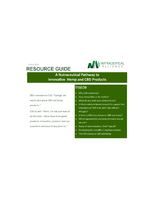The NFPA 70E and OSHA's Title 29 CFR - How Do They Relate?
The National Fire Protection Agency’s Standard for Electrical Safety in the Workplace, NFPA 70E, is a series of guidelines rather than laws. The Occupational Health and Safety Administration (OSHA), on the other hand, is a regulatory body. OSHA’s regulations for worker health and safety are written in Title 29 of the Code of Federal Regulations (29 CFR). OSHA does not enforce NFPA 70E, and NFPA 70E is not incorporated by reference in 29 CFR, yet employers can be cited for not following the standards. How is this possible?
Section 5(a)(1) of the Occupational Health and Safety Act states that employers "shall furnish to each of his employees employment and a place of employment which are free from recognized hazards that are causing or are likely to cause death or serious physical harm to his employees". The key phrase there is “recognized hazards”; NFPA 70E, as an industry consensus standard that addresses shock and arc-flash hazard, can be used as evidence that a hazard is “recognized”.
OSHA can also use NFPA 70E as a reference in general duty clause citations, in determining if there was a feasible method of correcting a hazard. OSHAÂ 29 CFR 1910 Subpart S Appendix A - Reference Documents specifically states that NFPA 70E is a national consensus standard, and can be helpful in understanding and complying with the requirements of Subpart S – Electrical.
According to John Leedy of Leedy Electric East, OSHA’s 29 CFR contains many requirements for electrical safe work practices that parallel NFPA standards, but without specific directives on how to apply the requirements. “Relevant industry standards such as NFPA 70E are considered "how-to" guides for complying with the more general OSHA rules.,” he stated.
OSHA 1910.303 requires employers to mark electrical equipment with descriptive markings, including the equipment's voltage, current, wattage, or other ratings as necessary. Employers are also required to use techniques such as safety signs and tags, barricades, and attendants to warn and protect employees from hazards that could cause injury due to electric shock, burns or failure of electric equipment parts.
OSHA's regulations do not include a specific requirement for the use of fire resistant clothing, but paragraph (a)(2)(ii) of §1910.335 requires the use of protective shields, barriers, or insulating equipment "to protect each employee from shocks, burns, or other electrically related injuries while that employee is working . . . where dangerous electric heating or arcing might occur", and that the “shield, barrier, or insulating material — must fully protect employees from electric shock, the blast, and arc- flash burn hazards associated with the incident energy exposure for the specific task to be performed.”
In both these areas, NFPA 70E is the industry consensus standard that gives more specific guidance on compliance.
In short, following NFPA 70E standards can be key to ensuring compliance with OSHA regulations on electrical safety.
For more information on NFPA 70E and OSHA, contact Leedy Electric East at (863) 425-2698, or visit the Leedy Electric website at http://www.leedyelectric.com.



